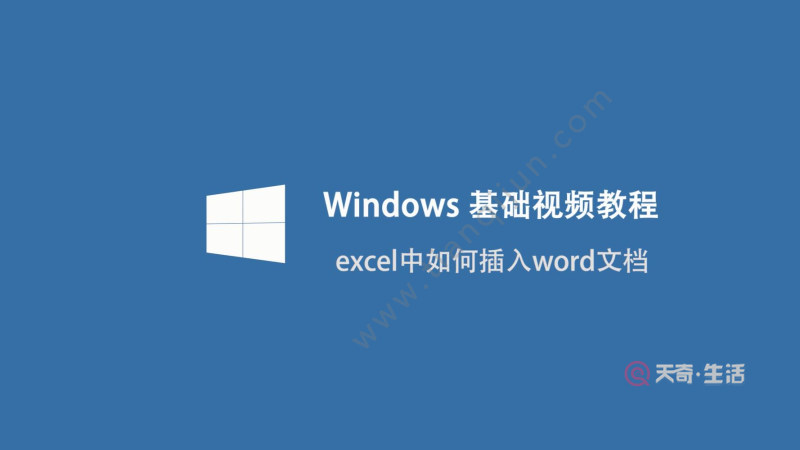Pythonдёӯе…ідәҺpropertyдҪҝз”Ёзҡ„е°ҸжҠҖе·§
зӣ®еҪ•
- propertyеұһжҖ§
- е…·дҪ“е®һдҫӢ
- propertyеұһжҖ§зҡ„жңүдёӨз§Қж–№ејҸ
- иЈ…йҘ°еҷЁж–№ејҸ
- ж—§ејҸзұ»
- ж–°ејҸзұ»
- зұ»еұһжҖ§ж–№ејҸ
- propertyеҜ№иұЎдёҺ@propertyиЈ…йҘ°еҷЁеҜ№жҜ”
- propertyеҜ№иұЎзұ»еұһжҖ§
- @propertyиЈ…йҘ°еҷЁ
propertyеұһжҖ§ дёҖз§Қз”Ёиө·жқҘеғҸжҳҜдҪҝз”Ёе®һдҫӢеұһжҖ§дёҖж ·зҡ„зү№ж®ҠеұһжҖ§пјҢеҸҜд»ҘеҜ№еә”дәҺжҹҗдёӘж–№жі•
ж—ўиҰҒдҝқжҠӨзұ»зҡ„е°ҒиЈ…зү№жҖ§пјҢеҸҲиҰҒи®©ејҖеҸ‘иҖ…еҸҜд»ҘдҪҝз”Ё еҜ№иұЎ.еұһжҖ§ зҡ„ж–№ејҸж“ҚдҪңж–№жі•пјҢ
@property иЈ…йҘ°еҷЁпјҢеҸҜд»ҘзӣҙжҺҘйҖҡиҝҮж–№жі•еҗҚжқҘи®ҝй—®ж–№жі•пјҢдёҚйңҖиҰҒеңЁж–№жі•еҗҚеҗҺж·»еҠ дёҖеҜ№ () е°ҸжӢ¬еҸ·гҖӮжқҘзңӢдёӢжұӮеңҶзҡ„йқўз§Ҝзҡ„дҫӢеӯҗ
class Circle(object):PI = 3.14def __init__(self, r):# rеңҶзҡ„еҚҠеҫ„self.r = rself.__area = self.PI * self.r * self.r@propertydef area(self):return self.__areadef get_area(self):return self.__areaIn [2]: c = Circle(10)In [3]: c.areaOut[3]: 314.0In [4]: c.get_area()Out[4]: 314.0
propertyеұһжҖ§зҡ„е®ҡд№үе’Ңи°ғз”ЁиҰҒжіЁж„ҸдёҖдёӢеҮ зӮ№пјҡ
- е®ҡд№үж—¶пјҢеңЁе®һдҫӢж–№жі•зҡ„еҹәзЎҖдёҠж·»еҠ
@propertyиЈ…йҘ°еҷЁпјӣ并且仅жңүдёҖдёӘselfеҸӮж•° - и°ғз”Ёж—¶пјҢж— йңҖжӢ¬еҸ·
()
е®һдҫӢж–№жі•пјҡc.get_area()propertyиЈ…йҘ°зҡ„ж–№жі•пјҡc.area
е…·дҪ“е®һдҫӢ еҜ№дәҺжҹҗе•ҶеҹҺдёӯжҳҫзӨәз”өи„‘дё»жңәзҡ„еҲ—иЎЁйЎөйқўпјҢжҜҸж¬ЎиҜ·жұӮдёҚеҸҜиғҪжҠҠж•°жҚ®еә“дёӯзҡ„жүҖжңүеҶ…е®№йғҪжҳҫзӨәеҲ°йЎөйқўдёҠпјҢиҖҢжҳҜйҖҡиҝҮеҲҶйЎөзҡ„еҠҹиғҪеұҖйғЁжҳҫзӨәпјҢжүҖд»ҘеңЁеҗ‘ж•°жҚ®еә“дёӯиҜ·жұӮж•°жҚ®ж—¶е°ұиҰҒжҳҫзӨәзҡ„жҢҮе®ҡиҺ·еҸ–д»Һ第
m жқЎеҲ°з¬¬ nжқЎзҡ„жүҖжңүж•°жҚ® иҝҷдёӘеҲҶйЎөзҡ„еҠҹиғҪеҢ…жӢ¬пјҡ- ж №жҚ®з”ЁжҲ·иҜ·жұӮзҡ„еҪ“еүҚйЎөе’ҢжҖ»ж•°жҚ®жқЎж•°и®Ўз®—еҮә m е’Ң n
- ж №жҚ® m е’Ң n еҺ»ж•°жҚ®еә“дёӯиҜ·жұӮж•°жҚ®
class Pager(object):def __init__(self, current_page):# з”ЁжҲ·еҪ“еүҚиҜ·жұӮзҡ„йЎөз ҒпјҲ第дёҖйЎөгҖҒ第дәҢйЎө...пјүself.current_page = current_page# жҜҸйЎөй»ҳи®ӨжҳҫзӨә10жқЎж•°жҚ®self.per_items = 10 @propertydef start(self):val = (self.current_page - 1) * self.per_itemsreturn val@propertydef end(self):val = self.current_page * self.per_itemsreturn val# ipythonжөӢйӘҢIn [2]: p = Pager(1)In [3]: p.start# е°ұжҳҜиө·е§ӢеҖјпјҢеҚіпјҡmOut[3]: 0In [4]: p.end# е°ұжҳҜз»“жқҹеҖјпјҢеҚіпјҡnOut[4]: 10In [5]: p = Pager(2)In [6]: p.startOut[6]: 10In [7]: p.endOut[7]: 20
propertyеұһжҖ§зҡ„жңүдёӨз§Қж–№ејҸ
- иЈ…йҘ°еҷЁ еҚіпјҡеңЁж–№жі•дёҠеә”з”ЁиЈ…йҘ°еҷЁ
@property - зұ»еұһжҖ§ еҚіпјҡеңЁзұ»дёӯе®ҡд№үеҖјдёә
propertyеҜ№иұЎзҡ„зұ»еұһжҖ§property()
иЈ…йҘ°еҷЁж–№ејҸ
еңЁзұ»зҡ„е®һдҫӢж–№жі•дёҠеә”з”Ё
@property иЈ…йҘ°еҷЁPythonдёӯзҡ„зұ»жңү
ж—§ејҸзұ» е’Ң ж–°ејҸзұ»пјҢж–°ејҸзұ» зҡ„еұһжҖ§жҜ” ж—§ејҸзұ»зҡ„еұһжҖ§дё°еҜҢгҖӮж—§ејҸзұ» ж—§ејҸзұ»пјҢе…·жңүдёҖз§Қ
@property иЈ…йҘ°еҷЁclass Goods:def __init__(self, name):self.name = name@propertydef price(self):return 100# ipythonжөӢйӘҢIn [10]: g = Goods('жүӢиЎЁ')In [11]: g.priceOut[11]: 100
ж–°ејҸзұ» ж–°ејҸзұ»пјҢе…·жңүдёүз§Қ
@property иЈ…йҘ°еҷЁclass Goods:"""python3дёӯй»ҳи®Ө继жүҝobjectзұ»д»Ҙpython2гҖҒ3жү§иЎҢжӯӨзЁӢеәҸзҡ„з»“жһңдёҚеҗҢпјҢеӣ дёәеҸӘжңүеңЁpython3дёӯжүҚжңү@xxx.setter@xxx.deleter"""@propertydef price(self):print('@property')@price.setterdef price(self, value):print('@price.setter')@price.deleterdef price(self):print('@price.deleter')# ipythonжөӢйӘҢIn [13]: g = Goods()In [14]: g.price@propertyIn [15]: g.price = 100@price.setterIn [16]: del g.price@price.deleter
g.priceеҚ•зӢ¬и°ғз”ЁиҮӘеҠЁжү§иЎҢ@propertyдҝ®йҘ°зҡ„priceж–№жі•пјҢ并иҺ·еҸ–ж–№жі•зҡ„иҝ”еӣһеҖјg.price = 100иөӢеҖјиҮӘеҠЁжү§иЎҢ@price.setterдҝ®йҘ°зҡ„priceж–№жі•пјҢ并е°Ҷ100иөӢеҖјз»ҷж–№жі•зҡ„еҸӮж•°del g.priceеҲ йҷӨиҮӘеҠЁжү§иЎҢ@price.deleterдҝ®йҘ°зҡ„priceж–№жі•
- ж—§ејҸзұ»дёӯзҡ„еұһжҖ§еҸӘжңүдёҖз§Қи®ҝй—®ж–№ејҸпјҢе…¶еҜ№еә”иў«
@propertyдҝ®йҘ°зҡ„ж–№жі• - ж–°ејҸзұ»дёӯзҡ„еұһжҖ§жңүдёүз§Қи®ҝй—®ж–№ејҸпјҢ并еҲҶеҲ«еҜ№еә”дәҶдёүдёӘиў«
@propertyгҖҒ@ж–№жі•еҗҚ.setterгҖҒ@ж–№жі•еҗҚ.deleterдҝ®йҘ°зҡ„ж–№жі•
# Goodsзұ»@propertyеә”з”Ёclass Goods(object):def __init__(self, name, price):# еҺҹд»·self.original_price = price# жҠҳжүЈself.discount = 0.8@propertydef price(self):# е®һйҷ…д»·ж ј = еҺҹд»· * жҠҳжүЈnew_price = self.original_price * self.discountreturn new_price@price.setterdef price(self, value):self.original_price = value@price.deleterdef price(self):print('еҲ йҷӨе•Ҷе“ҒеҺҹд»·')del self.original_price# ipythonжөӢйӘҢIn [22]: g = Goods('е°ҸзұіжүӢжңә', 2000)In [23]: g.priceOut[23]: 1600.0In [24]: g.price = 3000In [25]: g.priceOut[25]: 2400.0In [26]: del g.priceеҲ йҷӨе•Ҷе“ҒеҺҹд»·In [27]: g.price---------------------------------------------------------------------------AttributeErrorTraceback (most recent call last)in ----> 1 g.price in price(self)12def price(self):13# е®һйҷ…д»·ж ј = еҺҹд»· * жҠҳжүЈ---> 14new_price = self.original_price * self.discount15return new_price16AttributeError: 'Goods' object has no attribute 'original_price'
зұ»еұһжҖ§ж–№ејҸ
еҲӣе»әеҖјдёә
property еҜ№иұЎзҡ„зұ»еұһжҖ§пјҢеҪ“дҪҝз”Ёзұ»еұһжҖ§зҡ„ж–№ејҸеҲӣе»ә property еұһжҖ§ж—¶пјҢж—§ејҸзұ» е’Ң ж–°ејҸзұ»ж— еҢәеҲ«class Foo:def get_bar(self):return 'get_bar'BAR = property(get_bar)# ipython жөӢйӘҢIn [32]: f = Foo()In [33]: f.BAROut[33]: 'get_bar'
f.BAR иҮӘеҠЁи°ғз”Ё get_bar() ж–№жі•пјҢ并иҺ·еҸ–ж–№жі•зҡ„иҝ”еӣһеҖјproperty() дёӯжңүдёӘеӣӣдёӘеҸӮж•°- 第дёҖдёӘеҸӮж•°жҳҜж–№жі•еҗҚпјҢи°ғз”Ё еҜ№иұЎ.еұһжҖ§ ж—¶иҮӘеҠЁи§ҰеҸ‘жү§иЎҢж–№жі•
- 第дәҢдёӘеҸӮж•°жҳҜж–№жі•еҗҚпјҢи°ғз”Ё еҜ№иұЎ.еұһжҖ§ пјқ XXX ж—¶иҮӘеҠЁи§ҰеҸ‘жү§иЎҢж–№жі•
- 第дёүдёӘеҸӮж•°жҳҜж–№жі•еҗҚпјҢи°ғз”Ё del еҜ№иұЎ.еұһжҖ§ ж—¶иҮӘеҠЁи§ҰеҸ‘жү§иЎҢж–№жі•
- 第еӣӣдёӘеҸӮж•°жҳҜеӯ—з¬ҰдёІпјҢи°ғз”Ё еҜ№иұЎ.еұһжҖ§._doc_ пјҢжӯӨеҸӮж•°жҳҜиҜҘеұһжҖ§зҡ„жҸҸиҝ°дҝЎжҒҜ
class Foo(object):def __init__(self, bar):self.bar = bardef get_bar(self):print('get_bar')return self.bardef set_bar(self, value): """еҝ…йЎ»иҰҒжңүдёӨдёӘеҸӮж•°"""print('set bar ' + value)self.bar = valuedef del_bar(self):print('del bar')del self.barBAR = property(get_bar, set_bar, del_bar, "bar description...")# ipythonжөӢйӘҢIn [50]: f = Foo('python')In [51]: f.BARget_barOut[51]: 'python'In [52]: f.BAR = 'Java'set bar JavaIn [53]: f.BARget_barOut[53]: 'Java'In [54]: del f.BARdel bar
propertyеҜ№иұЎдёҺ@propertyиЈ…йҘ°еҷЁеҜ№жҜ” з”ұдәҺ зұ»еұһжҖ§ж–№ејҸ еҲӣе»ә
property еҜ№иұЎеұһжҖ§е…·жңү3з§Қи®ҝй—®ж–№ејҸпјҢжҲ‘们еҸҜд»Ҙж №жҚ®е®ғ们еҮ дёӘеұһжҖ§зҡ„и®ҝй—®зү№зӮ№пјҢеҲҶеҲ«е°ҶдёүдёӘж–№жі•е®ҡд№үдёәеҜ№ еҗҢдёҖдёӘеұһжҖ§пјҡиҺ·еҸ–гҖҒдҝ®ж”№гҖҒеҲ йҷӨ пјҢи·ҹ @property иЈ…йҘ°еҷЁеҜ№жҜ”гҖӮpropertyеҜ№иұЎзұ»еұһжҖ§
# Goodsзұ» propertyеҜ№иұЎзұ»еұһжҖ§ еә”з”Ёclass Goods(object):def __init__(self, name, price):# еҺҹд»·self.original_price = price# жҠҳжүЈself.discount = 0.8def get_price(self):# е®һйҷ…д»·ж ј = еҺҹд»· * жҠҳжүЈnew_price = self.original_price * self.discountreturn new_pricedef set_price(self, value):self.original_price = valuedef del_price(self):print('еҲ йҷӨе•Ҷе“ҒеҺҹд»·')del self.original_pricePRICE = property(get_price, set_price, del_price, "price description")# ipythonжөӢйӘҢIn [59]: g = Goods('Macз”өи„‘', 9000)In [60]: g.PRICEOut[60]: 7200.0In [61]: g.PRICE = 10000In [62]: g.PRICEOut[62]: 8000.0In [63]: del g.PRICEеҲ йҷӨе•Ҷе“ҒеҺҹд»·
@propertyиЈ…йҘ°еҷЁ
# Goodsзұ» @propertyиЈ…йҘ°еҷЁ еә”з”Ёclass Goods(object):def __init__(self, name, price):# еҺҹд»·self.original_price = price# жҠҳжүЈself.discount = 0.8@propertydef price(self):# е®һйҷ…д»·ж ј = еҺҹд»· * жҠҳжүЈnew_price = self.original_price * self.discountreturn new_price@price.setterdef price(self, value):self.original_price = value@price.deleterdef price(self):print('еҲ йҷӨе•Ҷе“ҒеҺҹд»·')del self.original_price# ipythonжөӢйӘҢIn [59]: g = Goods('Macз”өи„‘', 9000)In [60]: g.PRICEOut[60]: 7200.0In [61]: g.PRICE = 10000In [62]: g.PRICEOut[62]: 8000.0In [63]: del g.PRICEеҲ йҷӨе•Ҷе“ҒеҺҹд»·
еҸҜд»ҘеҸ‘зҺ°дёӨз§ҚйғҪеҸҜд»Ҙе®һзҺ°дҪҶ
@property иЈ…йҘ°еҷЁзҡ„еңЁ ж—§ејҸзұ»дёӯеҸӘжңү @property пјҢ жІЎжңү@method.setter е’Ң@method.deleterпјҢж–°ејҸзұ»еҲҷдёӨз§ҚйғҪеҸҜд»ҘдҪҝз”ЁгҖӮеӣ жӯӨзңӢеӨ§е®¶зҡ„д№ жғҜпјҢйҖүдёҖз§ҚгҖӮеӨ§иҮӘ然用数зҷҫдәҝе№ҙеҲӣйҖ еҮәжҲ‘们зҺ°е®һдё–з•ҢпјҢиҖҢзЁӢеәҸе‘ҳз”ЁеҮ зҷҫе№ҙеҲӣйҖ еҮәдёҖдёӘе®Ңе…ЁдёҚеҗҢзҡ„иҷҡжӢҹдё–з•ҢгҖӮжҲ‘们用键зӣҳж•ІеҮәдёҖз –дёҖз“ҰпјҢз”ЁеӨ§и„‘жһ„е»әдёҖеҲҮгҖӮдәә们жҠҠ1000и§ҶдёәжқғеЁҒпјҢжҲ‘们еҸҚе…¶йҒ“иЎҢд№ӢпјҢжҚҚеҚ«1024зҡ„ең°дҪҚгҖӮжҲ‘们дёҚжҳҜй”®зӣҳдҫ пјҢжҲ‘们еҸӘжҳҜе№іеҮЎдё–з•ҢдёӯдёҚеҮЎзҡ„зј”йҖ иҖ… гҖӮ
еҲ°жӯӨиҝҷзҜҮе…ідәҺPythonдёӯе…ідәҺpropertyдҪҝз”Ёзҡ„е°ҸжҠҖе·§зҡ„ж–Үз« е°ұд»Ӣз»ҚеҲ°иҝҷдәҶ,жӣҙеӨҡзӣёе…іPython property еҶ…е®№иҜ·жҗңзҙўи„ҡжң¬д№Ӣ家д»ҘеүҚзҡ„ж–Үз« жҲ–继з»ӯжөҸи§ҲдёӢйқўзҡ„зӣёе…іж–Үз« еёҢжңӣеӨ§е®¶д»ҘеҗҺеӨҡеӨҡж”ҜжҢҒи„ҡжң¬д№Ӣ家пјҒ
жҺЁиҚҗйҳ…иҜ»
- зғӯй—№дёӯзҡ„еӯӨзӢ¬
- Shell-BashеҸҳйҮҸдёҺиҝҗз®—з¬Ұ
- JSдёӯзҡ„еҗ„з§Қе®Ҫй«ҳеәҰе®ҡд№үеҸҠе…¶еә”з”Ё
- 2021-02-17|2021-02-17 е°Ҹе„ҝжҢүж‘©иҶ»дёӯз©ҙ-иҲ’зј“е’іе—Ҫ
- ж·ұе…ҘзҗҶи§ЈGoд№Ӣgenerate
- ејӮең°жҒӢдёӯпјҢйҖҗжёҗйҖӮеә”дёҖдёӘдәәеҲ°еә•ж„Ҹе‘ізқҖд»Җд№ҲпјҲпјү
- жҲ‘зңјдёӯзҡ„дҪӣзі»з»ҸзәӘдәә
- гҖҠйӯ”法科й«ҳдёӯзҡ„еҠЈзӯүз”ҹгҖӢ第26еҚ·пјҲInvasionзҜҮпјүеҸ‘е”®
- вҖңжҲҗй•ҝвҖқиҜ»д№ҰзӨҫзҫӨжӢӣеӢҹ
- 2020-04-07vueдёӯAxiosзҡ„е°ҒиЈ…е’ҢAPIжҺҘеҸЈзҡ„з®ЎзҗҶ











